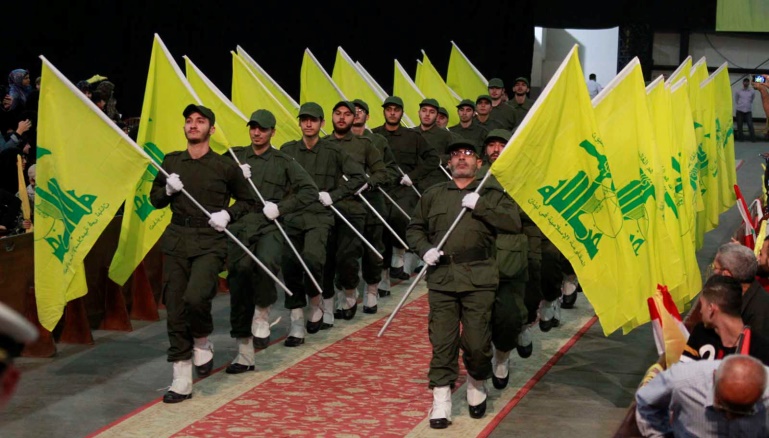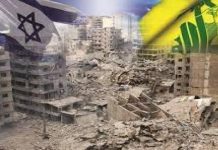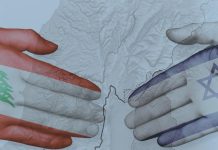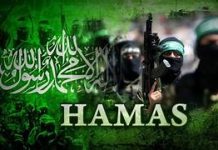How will Hezbollah respond to Samir Kuntar’s death?
Nicholas Blanford/Now Lebanon/December/21/15
Nasrallah has promised a tit-for-tat policy, but the party must be careful not to provoke a conflict neither it nor Israel wants
The handful of rockets fired from south of Tyre into western Galilee last night was a foretaste of the retaliation yet to come for the killing of Samir Kuntar, a veteran of resistance against Israel and Lebanon’s longest serving detainee in an Israeli jail. Kuntar died late Saturday night in the Jaramana district of Damascus in an airstrike attributed to Israel that destroyed the six-story building in which he was staying.Hailed in Lebanon as a resistance hero, Kuntar was reviled in Israel for his role in a 1979 seaborne raid on Nahariyah that left three members of one family dead along with a policeman. He was sentenced to 542 years in prison in 1980 but was released in 2008 in a swap for the bodies of two Israeli soldiers abducted by Hezbollah in July 2006, an incident that triggered the month-long war that summer. Kuntar, a Druze from Abey in the Chouf, was swiftly incorporated into Hezbollah’s ranks on his release and when the conflict in Syria began was tasked with building an anti-Israel resistance force in the Golan Heights. There are mixed reports as to his success in the Golan as a military commander.
Several small-scale attacks were attributed to his organization, beginning in December 2013 with a roadside bomb attack against an Israeli army jeep in the northern Golan which came four days after Hassan Laqqis, a senior Hezbollah commander, was shot dead in southern Beirut. A flurry of attacks in February and March 2014 along the Alpha Line, which separates the Israeli-occupied Golan from the UN-patrolled buffer zone, was also pinned on Kuntar’s group with possible assistance from Hezbollah. The attacks, which were a response to an Israeli airstrike against a Hezbollah weapons storage facility near Janta in the Bekaa Valley on 24 February, culminated in the wounding of four Israeli soldiers in a roadside bomb ambush three weeks later in the northern Golan.
Regardless of Kuntar’s capabilities as a field commander, for Hezbollah he was a potent symbol of enduring anti-Israel resistance and, as a Druze, of cross-sectarian unity in the struggle against the Jewish state. Ali Ammar, a Hezbollah MP, said on Sunday that Kuntar’s death would be avenged, leaving it up to the party’s military command to choose the means and timing of retribution. The launching of Grad rockets on Sunday evening was entirely in keeping with the dynamics surrounding Kuntar’s death and was simply a knee-jerk signal of displeasure toward Israel; an hors d’oeuvre ahead of the main course. Three 122mm Grad rockets were fired from orange groves about 1.5 kilometers northwest of Hanniyeh village, nine kilometers south of Tyre. All three flew about 18 kilometers to the south into Israel, with one crashing into the sea and the other two exploding in open areas just north of Nahariyah without causing casualties.
The rocket attack was reportedly claimed by the Popular Front for the Liberation of Palestine, subsequently confirmed by security sources in the south. The Israelis responded with eight 120mm mortar rounds fired from the border outpost at Zarit, opposite the Lebanese village of Marwahine. The rounds impacted in Wadi Nafka, a deep ravine south of Zibqine. The fact that the Israeli military chose to drop a few mortar rounds into a remote and unpopulated valley six kilometers south of Hanniyeh rather than fire 155mm artillery shells at the rocket launch site demonstrated that Israel was unwilling to risk further escalating the situation and was content with a few loud bangs on the Lebanese side of the border. The current situation mirrors the immediate aftermath of an Israeli pilotless drone strike on 18 January in the Golan that killed Jihad Mughniyeh — son of former Hezbollah military commander Imad Mughniyeh — an Iranian general and five other Hezbollah fighters. Hezbollah struck back 10 days later with an anti-tank missile ambush against an Israeli army convoy at the foot of the Shebaa Farms hills, killing an officer and a soldier.
Following the ambush, Hezbollah Secretary General Hassan Nasrallah said in a speech that the rules of engagement that had defined the tit-for-tat conflict between Hezbollah and Israel were over. “From now on, if any Hezbollah resistance cadre or youth is killed in a treacherous manner, we will hold Israel responsible and it will then be our right to respond at any place and at any time and in the manner we deem appropriate,” he said. Nasrallah is due to speak Monday night and will probably reaffirm that commitment, which will ensure a state of tension along Israel’s northern border in the coming days.
The concept of reciprocity is a cornerstone of Hezbollah’s defense strategy against Israel, which may offer a clue as to the party’s response to Kuntar’s assassination. In the years following the 2006 War, Nasrallah has articulated on several occasions Hezbollah’s strategy of retaliating in kind for Israeli actions against Lebanon in a future conflict — if Israel bombs Beirut, Hezbollah bombs Tel Aviv; if Israel blockades Lebanese ports, Hezbollah will blockade Israeli ports with its long-range anti-ship missiles; if Israel invades Lebanon, Hezbollah will invade Galilee. Even on a tactical level, Hezbollah has sought to achieve reciprocity against Israel. In October 2014, Hezbollah mounted a roadside bomb ambush in the Shebaa Farms that wounded two Israeli soldiers in response to the death a month earlier of a party military technician who died when a booby-trapped Israeli wire-tapping device exploded.
The January anti-tank missile attack against the Israeli convoy in the Shebaa Farms also sought to echo Israel’s deadly drone missile strike in the Golan 10 days earlier.
“They killed us in broad daylight, we killed them in broad daylight… They hit two of our vehicles, we hit two of their vehicles,” Nasrallah said at the time. One option is to allow Kuntar’s group in the Golan to assume responsibility for a retaliation, even if it is conducted under Hezbollah auspices. It could come in the form of a roadside bombing or anti-tank missile ambush across the Alfa Line in the Golan, thus conveying the impression that Kuntar’s legacy of a Syria-based anti-Israel resistance endures.
A second option is for Hezbollah to take direct credit for an operation against Israeli troops, possibly in the Shebaa Farms area, similar to the deadly missile ambush in January. In expectation of a retaliation, Israeli troops along the Blue Line and in the northern Golan are likely to exercise extreme caution and limit movements in the coming days, thus complicating Hezbollah’s opportunities to strike. A third, less likely, “wild card” option could see Hezbollah settle for something out of the ordinary to demonstrate military prowess, daring and the requisite reciprocity, such as dispatching across the border one of its own drones, fitted with missiles or laden with explosives, to target an Israeli military base.
Whatever method of retaliation Hezbollah chooses, it will need to draw Israeli blood to satisfy the requirements of deterrence. Israel’s decision not to counter-retaliate to the deaths of two soldiers in Hezbollah’s anti-tank missile ambush in January demonstrated that Hezbollah can get away with a fatal attack against Israeli troops without triggering a tit-for-tat escalation that could lead to a war that neither side wants. The trick, as it always has been in such situations over the past 15 years, is to exact a toll against Israel that constitutes a painful slap but not to the extent that Israel feels it has no choice but to counter-respond.
Whether Hezbollah can strike the right balance in this latest exercise of brinkmanship between these two bitter enemies should become clear in the days ahead.
**Nicholas Blanford is Beirut correspondent of The Christian Science Monitor and author of Warriors of God: Inside Hezbollah’s Thirty-Year Struggle Against Israel.





















